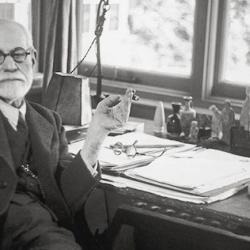Scott Newstok urges students to learn like Shakespeare in a convocation address at Rhodes College. That means learning rhetoric: “in the Renaissance, rhetoric was nothing less than the fabric of thought itself. Because thinking and speaking well form the basis of existence in a community, rhetoric prepares you for every occasion that requires words. That’s why Tudor students devoted countless hours to examining vivid models, figuring out ways to turn a phrase, exercising elaborate verbal patterning.”
Clear speech and writing come only through practice: You take it for granted that Olympic athletes and professional musicians must practice relentlessly to perfect their craft. Why should you expect the craft of thought to require anything less disciplined? Fierce attention to clear and precise writing is the essential tool for you to foster independent judgment. That is rhetoric.”
And rhetoric is learned by inventio, which means, first, taking inventory and, only secondarily, invention:
Renaissance thinkers—aptly, looking back to the Roman Seneca, who himself looked back to the Greeks—compared the process of imitation to a bee’s gathering nectar from many flowers and then transforming it into honey. . . . [the] honey metaphor corrects our naïve notion that being creative entails making something from nothing. Instead, you become a creator by wrestling with the legacy of your authoritative predecessors, standing on the shoulders of giants. . . . when rhetoricians spoke of inventio, they meant the first step in constructing an argument: an inventory of your mind’s treasury of knowledge—your database of reading, which you can accumulate only through slow, deliberate study.” If students are going to be creative, they need to work within a tradition: “You simply cannot transform tradition (a creative ideal) without first knowing it (a conserving ideal).
Shakespeare was trained in the art of disputation, which enabled him to sympathize with different viewpoints and enabled him to master “the verbal give-and-take that constitutes the heart of drama.” Newstok advises his students to develop the critical thinking to “speaking truth plurally.”
Learning of this sort takes place through apprenticeship, which was “crucial for skilled labor in Renaissance Europe. It required an exacting, collaborative environment, with guidance from people who knew more than you did. When Shakespeare arrived on the London theater scene, he entered a kind of artistic studio, or workshop, or laboratory, in which he was apprenticing himself to experienced playwrights. Note that playwright is not spelled w-r-i-t-e; it’s spelled w-r-i-g-h-t: a maker—like a wheelwright, who crafts wheels, or a shipwright, who crafts ships. A playwright crafts plays.”















